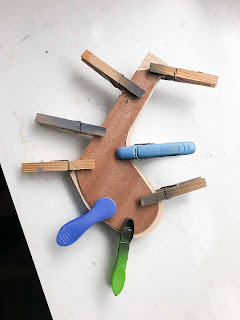The Hansa dinghy was introduced in 1947 by Henry Rasmussen, founder of the renowned boatyard Abeking & Rasmussen (A&R). During the post war years there there was an Allied ban on larger new boats. The Hansa is really a keel boat with a fixed keel and has a draught of 50 cm. The ballast keel is 150 kg and the beam is 1.65 meters, which gives good stability, but still has the character of a dinghy. The boat is 5.85 m long, and was designed to be a small, safe cruising boat for inland and coastal waters. The cabin is small, but there is just enough space for two sleeping berths.
More information can be found on the class association website:
Hansajolle – Homepage of the class association of the Hansajollen dinghies
German manufacturers Aeronaut, produce a kit and the hull is 940mm long.
The supplied keel is made from plastic, which doesn't provide any ballast, so another was made from 3mm thick stainless steel. Further ballast will be needed to be placed in the hull or perhaps clamped to the keel.
The kit is supplied with aluminium tube for the stand but this was replaced with 9mm dowel, as this is a "kinder" material to the boat, the dowel can be glued to the supporting ends so the stand is rigid and the aluminium tube can be saved for another use.
The cabin doors are designed so they are removable, which I assume will make access to the cabin easier for when it comes to installing servos and lines. Time will tell. The instructions recommend that wooden parts should be "protected" before gluing into the hull. Certainly the mahogany pieces will receive a 50/50 diluted coat before any gluing takes place, as these will form an attractive part of the boat.











No comments:
Post a Comment